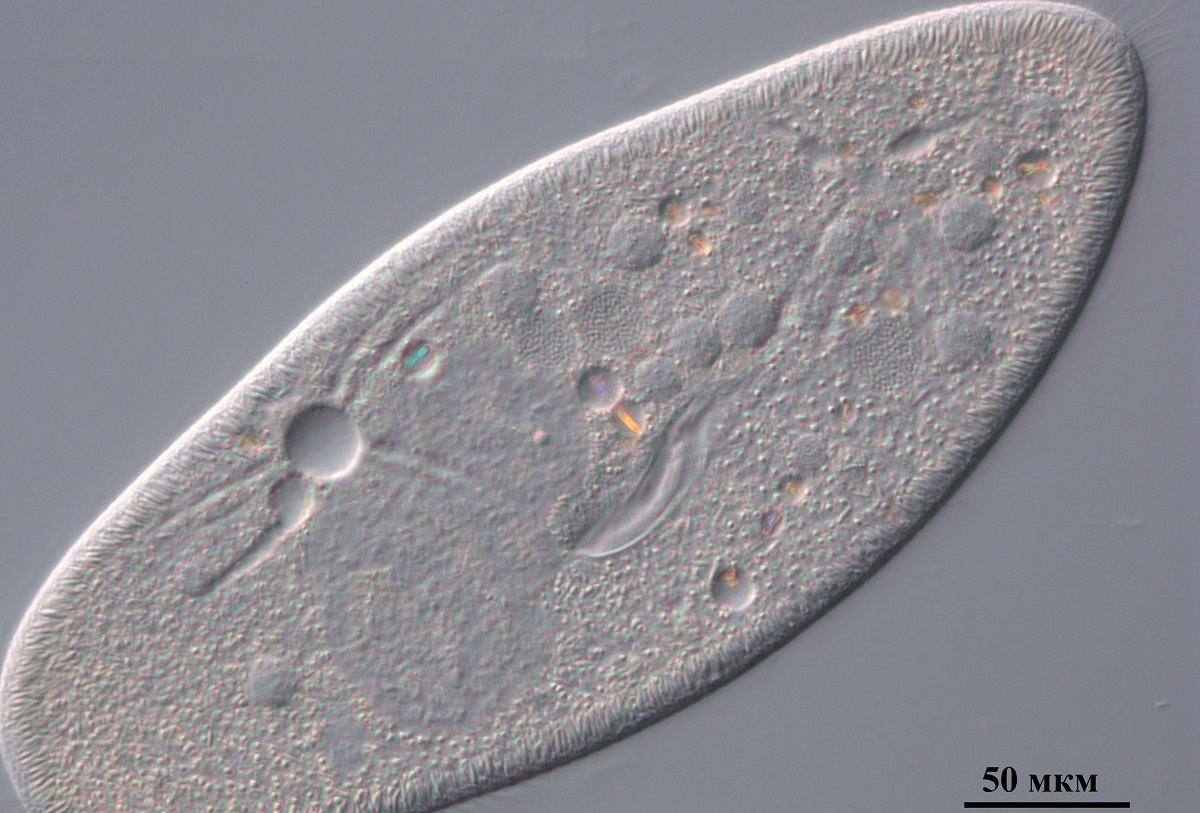Each cell is a small world: the microbiome of ciliates has been studied

Microbiologists of St Petersburg University, together with researchers from the Institute of Cellular and Intracellular Symbiosis of the Ural Branch of the Russian Academy of Sciences, the University of Pisa, and the University of Florence investigated the microbiome of a sessile free-living ciliate Stentor coeruleus. This is one of the first studies addressing prokaryotic communities associated with unicellular eukaryotes through metagenomic analysis. The research results have been published in Scientific Reports.
A microbiome is a community of microorganisms that inhabit an ecological niche. Microbiomes exist in both environmental biotopes, for example, a water body or forest soil – and in living multicellular host organisms – such as humans, animals or plants. A microbiome may be comprised of bacteria, archaea, and unicellular eukaryotes –protists and fungi.
For the last three years the scientists have been analysing the microbiomes of two ciliates: Paramecium and Stentor. The results of the study on Paramecium were published last winter. The new publication is the next step in the study of protistan microbiomes.
‘The human and animal microbiome studies are at the cutting edge of biology, while only few studies investigated bacterial consortia associated with protists. Previously, the question whether protists host their own microbiomes — that is, they harbour prokaryotic communities —had not been properly addressed. Therefore, the results of our study are setting a new direction for scientific research,’ explained Alexey Potekhin, Professor at the Department of Microbiology of St Petersburg University.
The idea that ciliates might have their own microbiomes was not random. Microbiologists know that in sterile conditions these organisms die. Their viability depends strongly on the presence of bacteria in the environment. However, it was almost impossible to characterise their bacterial composition in detail, nor to separate the ‘lodgers’ of the ciliates from the inhabitants of their aquatic environment water source, — there were no available methods. Metagenomic analysis, which had hardly ever been used for this purpose before, enabled to get closer to finding an answer.
‘This approach enables to sequence complete set of certain genetic markers in the total DNA of a sample. Hence, all sequences are assigned to their hosts allowing to identify them. For bacteria and archaea, this is the 16S rRNA gene sequence. Metagenomics and high-throughput sequencing have expanded our understanding of the microbial diversity in natural environments tremendously over the last 10–15 years. In our study, we used metagenomic analysis to identify bacteria associated with the cells of two common freshwater ciliate genera – Stentor and Paramecium,’ the scientist explains.
The researchers have discovered that the bacterial community of the environments — be it a water of the stream or a laboratory culture medium —differs significantly from the microbial consortium associated with ciliates. The variety of microorganisms in natural reservoirs is always richer than in ciliates. However, the microbiologists were able to detect representatives of a few dozen of bacterial genera in Stentor cells. Each ciliate appeared to be an independent ecological microniche. ‘Thus, ciliates indeed do have their own microbiome,’ emphasises Alexey Potekhin.
The second important conclusion is that Stentor microbiome is different from Paramecium microbiome. In other words, different ciliates, even from the same water source, coexist with different bacteria. However, scientists have yet to determine the species-specific traits of ciliate microbiomes, their stability and specificity, which will require further study.
The last but not the least discovery is that the microbiomes of ciliates, especially of Stentor, comprise representatives of bacterial genera which include a number of species known as opportunists, commensals and even potential human pathogens, such as Mycobacterium, Streptococcus, and Neisseria. The research method does not allow identification of individual species (only the genus). Therefore, at present, it cannot be claimed that ciliates are natural carriers of pathogenic bacteria. ‘In any case, it is evident that it is mainly bacteria adapted to form symbiotic associations with host organisms that cohabit with ciliates. Apparently, once outside the host, in a water body, these bacteria colonise protists, for lack of better alternatives. After all, protists are large eukaryotic cells, which are not so dissimilar to those of multicellular organisms. So, depending on the tactics of a particular bacterium, it can survive for some time either outside or inside the host cell. The associated bacteria, however, rarely thrive in association with protists to be able to propagate rapidly. Their numbers, as our analyses have shown, are always small, but they are comfortable enough to survive the challenging times. Thus, ciliates (and, most likely, other protists) may play the role of transient reservoirs for bacteria outside their preferred multicellular host,’ concludes the scientist.

